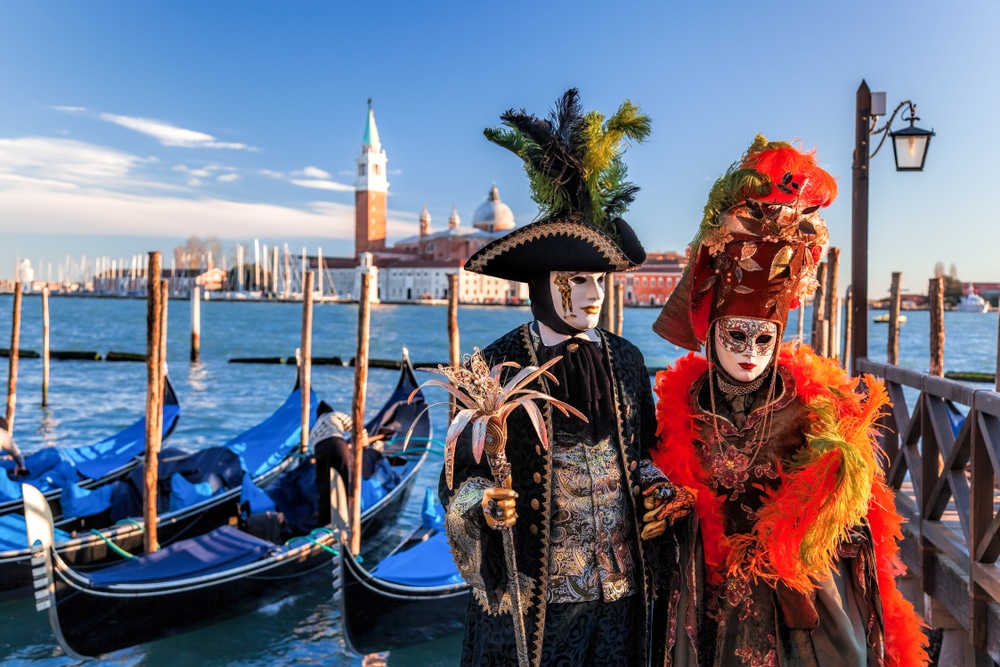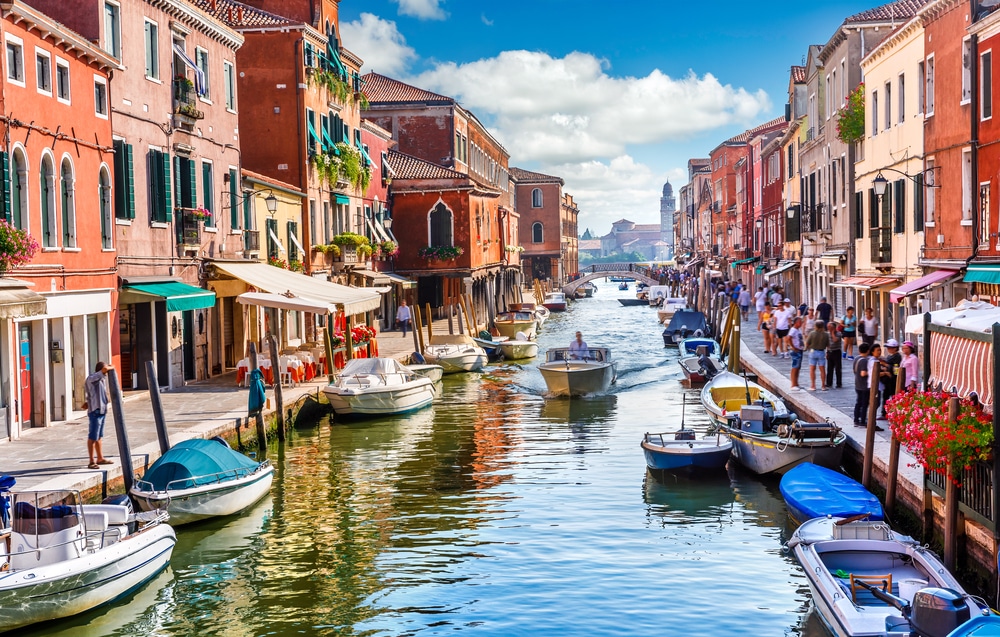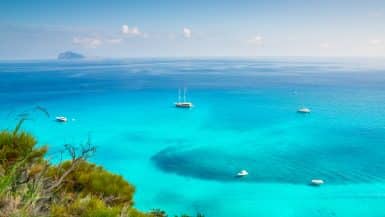When we think of Venice, we think of Casanova, masked balls and the glorious times when the jewel on the Adriatic Sea in Italy was a meeting point for merchants and traders. Churches, bridges and palaces reveal a lot about the history of the lagoon city in Veneto. Walking through the narrow streets, you can get a glimpse of the former atmosphere. Taking the gondola down the Grand Canal is a must for many lovers. Venice fascinates visitors from all over the world – but the ravages of time gnaw at the city.
What makes Venice special
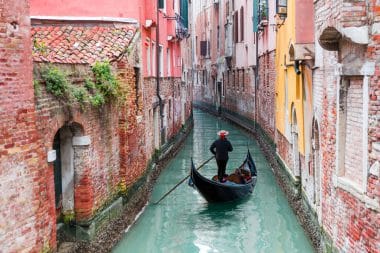
The city on the water is built on more than 100 islands in an Adriatic lagoon. More than 400 bridges connect the individual islands with each other. About 150 canals serve as traffic routes on the water. Vaporetti, public transport on the water, and the legendary gondolas transport people around the city. You can also explore the narrow streets on foot.
During a trip on the great canals, you pass the imposing facades of palaces and churches, luxurious hotels and residential buildings. From this perspective, it looks like all the buildings were built on stilts in the water. In fact, the city stands mostly on the muddy bottom of the lagoon. Even though the front of the buildings on the canal side is supported by tree trunks everywhere, sandbanks form the foundation of Venice.

To immerse yourself in the special flair of the lagoon city, the best way to get around is on foot. Since there are hardly any roads for cars, you can park your car in one of the parking spaces in Piazzale Roma, the “gateway to the old town”. Parking spaces (e.g. in the San Marco garage) are correspondingly rare and expensive. It is better to park the car in Mestre and travel by public transport.
At high tide (“Aqua alta”), the sea water overflows its banks in some places in Venice. To avoid getting your feet wet on a city trip, it’s better to find out about the water level – or pack your rubber boots.
At the legendary Venice Carnival, guests from all over the world flood the city’s hotels and attractions. Affordable alternative accommodation can then be found on the mainland. Venice is most beautiful (and not quite as crowded) in autumn or spring. The summer months of July and August are the busiest and the canals sometimes smell strong due to the high temperatures.
To regulate the tourist crowds, Venice has set an entrance fee of €3 for day tourists. Guests who stay longer in the city pay a local tax. The city administration is investing the money in the restoration work and infrastructure that is necessary in many places.
Sights in Venice

In the district of San Marco, directly on the Grand Canal, lies St. Mark’s Square. The 82-metre-wide and 175-metre-long “Heart of Venice” is a tourist magnet. The always lively square is surrounded by St. Mark’s Basilica, St. Mark’s Tower and the popular Doge’s Palace – many important sights at once. Stay away from the pigeon feeding souvenir photo on St. Mark’s Square:
As a measure against pigeon droppings, there is an official ban on feeding. Anyone who gets caught paying a fine of 500 euros. St. Mark’s Basilica (Basilica di San Marco) is the most important church in the city. The over 900-year-old “golden basilica” is not only a holy place, but also a monument to the splendor and glory of ancient Venice. The St. Mark’s Tower can be visited in more detail for 8 euros admission.
The world-famous Doge’s Palace used to be the seat of the head of state of Venice. For 19 euros, you can also see the palace from the inside and be transported back in time through the paintings and the magnificent rooms. The connection between the Doge’s Palace and the prison is the famous Bridge of Sighs. From this Venice landmark, prisoners used to take a last look at freedom. The particularly popular Rialto Bridge, one of the first stone bridges in the city, is also always well attended.
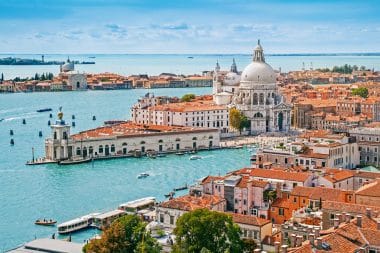
Early morning is suitable for a souvenir picture. At this time of day, you can still enjoy the view from the bridge to the Grand Canal, Venice’s main waterway, relatively undisturbed. A boat trip on the Grand Canal – whether gondola or scheduled boat – is a must on a trip to Venice. From the water, the full splendor of the city is revealed. With a little imagination, you can guess the past, despite the crowd of the many boats. By the way: A gondola ride is an unforgettable event, but it also costs a proud 100 euros. For an extra breeze of romance, you can ask your gondolier to drive you through the more secluded side canals. Less romantic is the vaporetti, which stop at various stops in the city.
Culinary delights in Venice

In order to eat well and at a reasonable price in Venice, it is better to leave the tourist paths. Authentic Venetian cuisine can be found mainly in an osteria or trattoria, both of which are rather cozy restaurants. Venice also has some noble “ristorante” to offer. Typical delicacies are, in addition to various pasta creations, for example “Fegato alla Veniziana” (calf’s liver in white wine and onion sauce) or “Baccalà mantecato” (cooked cod in parsley, garlic and olive oil). As a snack next to a good glass of wine, “polpette” (meatballs) or “folpetti” (octopus) are suitable.
To fully enjoy the Italian food culture, the typical menu sequence is recommended: “Antipasti” as a starter, the “Primo Piatto” (pasta or risotto), followed by a dish with fish or meat as a main course. A good red wine should not be missing with the meal, as well as the dessert and the espresso at the end.
Beauty is transient
If you walk through the “Serenissima” with your eyes open, you will see crumbling facades and the museum character of Venice. The eventful history of the city is still noticeable, but its current infrastructure is mainly geared towards the many tourists from all over the world. You won’t find a real Italian way of life in Venice, but you will find a fascinating look into the past.




